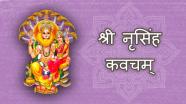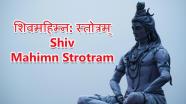The Bhagavad Gita was exposed to the world through Sanjaya, who senses and cognises all the events of the battlefield. Sanjaya is Dhritarashtra's advisor and also his charioteer.
The Bhagavad Gita presents a synthesis of the concept of Dharma, theistic bhakti, the yogic ideals of moksha through jnana, bhakti, karma, and Raja Yoga (spoken of in the 6th chapter) and Samkhya philosophy.
Bhagavad Gita comprises 18 chapters (section 25 to 42) in the Bhishma Parva of the epic Mahabharata and consists of 700 verses.
1.Prathama adhyaya (The Distress of Arjuna contains 46 verses):
Arjuna has requested Krishna to move his chariot between the two armies. His growing dejection is described as he fears losing friends and relatives as a consequence of war.
2.Sankhya yoga (The Book of Doctrines contains 72 verses):
After asking Krishna for help, Arjuna is instructed into various subjects such as, Karma yoga, Gyaana yoga, Sankhya yoga, Buddhi yoga and the immortal nature of the soul. Sankhya here refers to one of six orthodox schools of the Hindu Philosophy. This chapter is often considered the summary of the entire Bhagavad Gita.
3.Karma yoga (Virtue in Work or Virtue Of Actions contains 43 verses):
Krishna explains how Karma yoga, i.e. performance of prescribed duties, but without attachment to results, is the appropriate course of action for Arjuna.
4.Gyaana–Karma-Sanyasa yoga (The Religion of Knowledge contains 42 verses):
Krishna reveals that he has lived through many births, always teaching yoga for the protection of the pious and the destruction of the impious and stresses the importance of accepting a guru.
5.Karma–Sanyasa yoga (Religion by Renouncing Fruits of Works contains 29 verses):
Arjuna asks Krishna if it is better to forgo action or to act ("renunciation or discipline of action"). Krishna answers that both are ways to the same goal, but that acting in Karma yoga is superior.
6.Dhyan yoga or Atmasanyam yoga (Religion by Self-Restraint contains 47 verses):
Krishna describes the Ashtanga yoga. He further elucidates the difficulties of the mind and the techniques by which mastery of the mind might be gained.
7.Gyaana–ViGyaana yoga (Religion by Discernment contains 30 verses):
Krishna describes the absolute reality and its illusory energy Maya.
8.Aksara–Brahma yoga (Religion by Devotion to the One Supreme God contains 28 verses):
This chapter contains eschatology of the Bhagavad Gita. Importance of the last thought before death, differences between material and spiritual worlds, and light and dark paths that a soul takes after death are described.
9.Raja–Vidya–Raja–Guhya yoga (Religion by the Kingly Knowledge and the Kingly Mystery contains 34 verses):
Krishna explains how His eternal energy pervades, creates, preserves, and destroys the entire universe. According to theologian Christopher Southgate, verses of this chapter of the Gita are panentheistic, while German physicist and philosopher Max Bernhard Weinstein deems the work pandeistic.
10.Vibhuti–Vistara–yoga (Religion by the Heavenly Perfections contains 42 verses):
Krishna is described as the ultimate cause of all material and spiritual existence. Arjuna accepts Krishna as the Supreme Being, quoting great sages who have also done so.
11.Visvarupa–Darsana yoga (The Manifesting of the One and Manifold contains 55 verses):
On Arjuna's request, Krishna displays his "universal form" , a theophany of a being facing every way and emitting the radiance of a thousand suns, containing all other beings and material in existence.
12.Bhakti yoga (The Religion of Faith contains 20 verses):
In this chapter Krishna glorifies the path of devotion to God. Krishna describes the process of devotional service (Bhakti yoga). He also explains different forms of spiritual disciplines.
13.Ksetra–Ksetrajna Vibhaga yoga (Religion by Separation of Matter and Spirit contains 35 verses):
The difference between transient perishable physical body and the immutable eternal soul is described. The difference between individual consciousness and universal consciousness is also made clear.
14.Gunatraya–Vibhaga yoga (Religion by Separation from the Qualities contains 27 verses):
Krishna explains the three modes (gunas) of material nature pertaining to goodness, passion, and nescience. Their causes, characteristics, and influence on a living entity are also described.
15.Purusottama yoga (Religion by Attaining the Supreme contains 20 verses):
Krishna identifies the transcendental characteristics of God such as, omnipotence, omniscience, and omnipresence. Krishna also describes a symbolic tree (representing material existence), which has its roots in the heavens and its foliage on earth. Krishna explains that this tree should be felled with the "axe of detachment", after which one can go beyond to his supreme abode.
16.Daivasura–Sampad–Vibhaga yoga (The Separateness of the Divine and Undivine contains 24 verses):
Krishna identifies the human traits of the divine and the demonic natures. He counsels that to attain the supreme destination one must give up lust, anger, greed, and discern between right and wrong action by discernment through Buddhi and evidence from the scriptures.
17.Sraddhatraya-Vibhaga yoga (Religion by the Threefold Kinds of Faith contains 28 verses):
Krishna qualifies the three divisions of faith, thoughts, deeds, and even eating habits corresponding to the three modes (gunas).
18.Moksha–Sanyasa yoga (Religion by Deliverance and Renunciation contains 78 verses):
In this chapter, the conclusions of previous seventeen chapters are summed up. Krishna asks Arjuna to abandon all forms of dharma and simply surrender unto him and describes this as the ultimate perfection of life.
Tags:-












